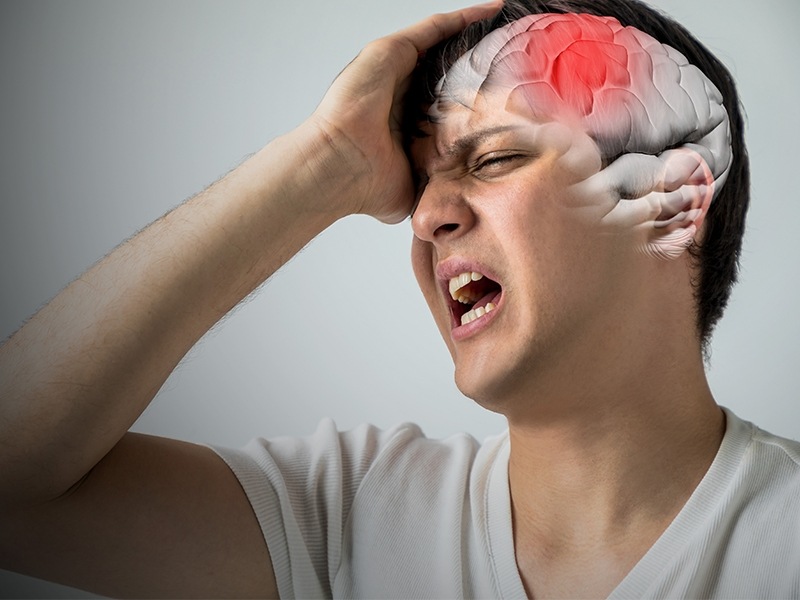What Is stroke ?
An ischemic stroke occurs when the blood supply to part of the brain is interrupted or reduced, preventing brain tissue from getting oxygen and nutrients. Brain cells begin to die in minutes. A stroke is a medical emergency, and prompt treatment is crucial. Early action can reduce brain damage and other complications.
A stroke is your brain’s equivalent of a heart attack, happening when there’s an issue with blood flow to part of your brain. If blood flow is cut off for longer than a few seconds, the brain cannot get nutrients and oxygen. Brain cells can die, causing lasting damage. A stroke can also occur if a blood vessel inside the brain bursts, leading to bleeding inside the head.

Symptoms
Signs and symptoms of stroke include:
- Trouble speaking and understanding what others are saying.You may experience confusion, slur words or have difficulty understanding speech.
- Paralysis or numbness of the face, arm or leg.You may develop sudden numbness, weakness or paralysis in the face, arm or leg. This often affects just one side of the body. Try to raise both your arms over your head at the same time. If one arm begins to fall, you may be having a stroke. Also, one side of your mouth may droop when you try to smile.
- Problems seeing in one or both eyes.You may suddenly have blurred or blackened vision in one or both eyes, or you may see double.
- A sudden, severe headache, which may be accompanied by vomiting, dizziness or altered consciousness, may indicate that you’re having a stroke.
- Trouble walking.You may stumble or lose your balance. You may also have sudden dizziness or a loss of coordination.
Causes
There are two main causes of stroke: a blocked artery (ischemic stroke) or leaking or bursting of a blood vessel (haemorrhagic stroke). Some people may have only a temporary disruption of blood flow to the brain, known as a transient ischemic attack (TIA), that doesn’t cause lasting symptoms.
Ischemic stroke: This is the most common type of stroke. It happens when the brain’s blood vessels become narrowed or blocked, causing severely reduced blood flow (ischemia).
Haemorrhagic stroke: Haemorrhagic stroke occurs when a blood vessel in the brain leaks or ruptures. Brain hemorrhages can result from many conditions that affect the blood vessels.
Transient ischemic attack (TIA): A transient ischemic attack (TIA) sometimes known as a ministroke is a temporary period of symptoms similar to those in a stroke. A TIA doesn’t cause permanent damage. A TIA is caused by a temporary decrease in blood supply to part of the brain, which may last as little as five minutes.
Investigation
Some of the tests you may have include:
- A physical exam.Your doctor will do a number of tests you’re familiar with, such as listening to the heart and checking the blood pressure. You’ll also have a neurological exam to see how a potential stroke is affecting your nervous system.
- Blood tests.You may have several blood tests, including tests to check how fast the blood clots, whether the blood sugar is too high or low, and whether you have an infection.
- Computerized tomography (CT) scan.A CT scan uses a series of X-rays to create a detailed image of your brain. A CT scan can show bleeding in the brain, an ischemic stroke, a tumor or other conditions
- Magnetic resonance imaging (MRI).An MRI uses powerful radio waves and a magnetic field to create a detailed view of the brain. An MRI can detect brain tissue damaged by an ischemic stroke and brain hemorrhages.
- Carotid ultrasound.In this test, sound waves create detailed images of the inside of the carotid arteries in the neck. This test shows build-up of fatty deposits (plaques) and blood flow in the carotid arteries.
- An echocardiogram uses sound waves to create detailed images of the heart. An echocardiogram can find a source of clots in the heart that may have travelled from the heart to the brain and caused a stroke.
Treatment
Emergency treatment for stroke depends on whether you’re having an ischemic stroke or a stroke that involves bleeding into the brain (haemorrhagic).
- Emergency IV medication: Therapy with drugs that can break up a clot has to be given within 4.5 hours from when symptoms first started if given intravenously. The sooner these drugs are given, the better. Quick treatment not only improves your chances of survival but also may reduce complications.
- Emergency endovascular procedures.Doctors sometimes treat ischemic strokes directly inside the blocked blood vessel. Endovascular therapy has been shown to significantly improve outcomes and reduce long-term disability after ischemic stroke. These procedures must be performed as soon as possible.
- Carotid endarterectomy.Carotid arteries are the blood vessels that run along each side of the neck, supplying the brain (carotid arteries) with blood. This surgery removes the plaque blocking a carotid artery and may reduce the risk of ischemic stroke.
- Angioplasty and stents.In an angioplasty, a surgeon threads a catheter to the carotid arteries through an artery in the groin. A balloon is then inflated to expand the narrowed artery. Then a stent can be inserted to support the opened artery.
Prevention
Many stroke prevention strategies are the same as strategies to prevent heart disease. In general, healthy lifestyle recommendations include:
- Controlling high blood pressure (hypertension).
- Lowering the amount of cholesterol and saturated fat in your diet.
- Quitting tobacco use.
- Managing diabetes.
- Maintaining a healthy weight.
- Eating a diet rich in fruits and vegetables.
- Exercising regularly.
- Drinking alcohol in moderation, if at all.
- Treating obstructive sleep apnea (OSA).
- Avoiding illegal drugs.
